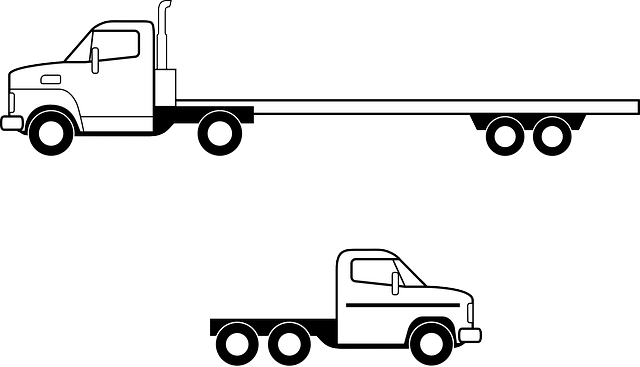Trucking cargo liability is crucial for safe goods transportation. Carriers are legally responsible for loss/damage, requiring secure loading and proper cargo securing. Risk assessment, detailed documentation, and insurance policy comprehension mitigate financial risks. Best practices include suitable packaging, padding, and loading techniques. Advanced tracking and strategic insurance planning enhance accountability and streamline claims. Effective claims management involves prompt action, meticulous documentation, and risk mitigation strategies to minimize losses.
Protecting transported goods from loss or damage is paramount in the logistics industry. In this comprehensive guide, we delve into essential strategies to safeguard your cargo during transit. From understanding the intricacies of trucking cargo liability and its legal implications, to best practices for securing goods and available insurance options, we equip you with the knowledge to mitigate risks effectively. Additionally, we explore claims management techniques, ensuring a robust approach to risk minimization in the face of unforeseen events.
Understanding Trucking Cargo Liability: Legal Responsibilities and Risks

Understanding Trucking Cargo Liability is a crucial aspect of ensuring safe and secure goods transportation. Legally, carriers are held responsible for any loss or damage that occurs to the cargo during transit. This includes both direct and indirect responsibilities, such as maintaining a safe loading environment and securing cargo properly. The legal framework around trucking cargo liability varies by jurisdiction, but common laws often require carriers to prove they have taken all reasonable precautions to safeguard the goods.
Risk assessment plays a significant role here. Expert advice suggests that shippers should thoroughly document the condition of cargo before handing it over to carriers. This includes providing detailed descriptions and, if possible, recording the state of the goods through photos or videos. Such evidence can be invaluable in case of any later disputes regarding liability. Moreover, understanding insurance policies, including their limitations and coverage, is essential for both shippers and carriers to mitigate potential financial risks.
Best Practices for Securing Goods During Transportation

When transporting goods, securing them properly is paramount to prevent loss or damage during transit. Best practices involve using secure packaging and containers designed for specific types of cargo. For fragile items, cushion them with packing materials like bubble wrap, wood shavings, or specialized foam to absorb shocks and impacts. Additionally, ensure all packages are securely fastened within the vehicle using straps, chains, or net securing systems, especially during long-haul trucking operations. Proper loading techniques, such as placing heavier items below lighter ones, can also mitigate shifting and reduce the risk of damage.
Trucking companies should implement robust safety protocols and regular staff training to enhance cargo liability management. This includes adhering to weight limits, using appropriate vehicle equipment, and monitoring load security during all stages of transportation. By combining these best practices with advanced tracking technology, businesses can maintain detailed records of their trucking cargo liability, enhancing accountability and facilitating efficient claims processes in case of any unforeseen incidents.
Insurance Options to Protect Against Loss and Damage

Protecting your transported goods from loss or damage is crucial in the trucking industry, where valuable cargo can be vulnerable during transit. One of the most effective strategies involves leveraging insurance options tailored to mitigate risks associated with trucking and cargo liability. Comprehensive insurance packages often include coverage for physical damage, theft, and even environmental hazards that may arise during transportation.
When considering insurance, businesses should evaluate their specific needs. General liability insurance provides a solid foundation by covering claims related to property damage or personal injury at the shipping destination. Additionally, specialized trucking cargo liability policies offer enhanced protection by addressing issues like cargo shift, weather damage, and loss during loading/unloading processes. These policies ensure that in the event of an incident, financial losses are minimized, allowing businesses to focus on their core operations without undue interruptions.
Strategies for Claims Management and Risk Mitigation

Effective claims management is key to minimizing financial losses and maintaining a positive reputation in the trucking industry. When a claim occurs, prompt action can prevent escalating damage. Start by documenting every step, from receiving the initial report to assessing the scene of the incident. This detailed record becomes crucial during the settlement process. Ensure all relevant information, including photographs and witness statements, is gathered systematically.
Risk mitigation strategies should be implemented to minimize potential losses. This involves pre-trip inspections to identify vehicle defects or cargo securing issues. Regular maintenance checks can prevent mechanical failures that may cause accidents. Additionally, proper training for drivers on safe handling practices ensures the security of transported goods. Implement secure loading and unloading procedures, especially for high-value or fragile trucking cargo liability items, to reduce the risk of damage during transit.
Protecting transported goods is a multifaceted endeavor, requiring a deep understanding of trucking cargo liability, adherence to best practices, and strategic choices regarding insurance and claims management. By navigating these key areas, businesses can significantly mitigate risks associated with loss or damage during transportation, ensuring the safe arrival of their valuable cargo. In light of the above discussions on trucking cargo liability and the available strategies, experts emphasize the importance of proactive measures to safeguard goods in transit, ultimately fostering a more secure and efficient logistics ecosystem.
